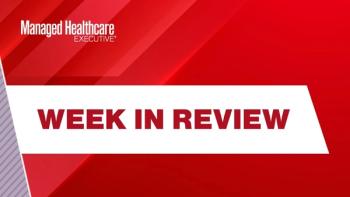
Optimize the effectiveness of health and wellness offerings
For any savvy health insurer that expects to remain competitive in the increasingly challenging industry, health and wellness programs are no longer novel. Rather, the offerings of a health and wellness program have evolved into an imperative way to engage current and potential customers, as well as positively affect an organization's bottom line.
For any savvy health insurer that expects to remain competitive in the increasingly challenging industry, health and wellness programs are no longer novel. Rather, the offerings of a health and wellness program have evolved into an imperative way to engage current and potential customers, as well as positively affect an organization's bottom line.
Some relevant key facts that are worthy of consideration include:
Still, optimizing a health and wellness program to cash in on these facts presents some distinct challenges. Foremost among these are clearly those related to the content, format and deployment of the offerings. Offerings must be designed in-house or selected from vendors, and then delivered in ways that are appropriate for each employer and member (for example, determining what level of intervention is required for a specific employer population based upon the results of a Health Risk Assessment).
At first, it can be hard for health plans to imagine why a health and wellness function should be different from any other department. However, differences between "business as usual" for a health insurer and a services-oriented, full-spectrum, health and wellness function quickly becomes apparent:
The gaps that may exist currently should not curtail health plans from initiating an integrated health and wellness program into their operations. However, these differences illustrate that to have an efficient, cost-effective health and wellness organization, some careful thought must be given as to how to create and manage that organization and the data that it needs.
Often, the appropriate skills and expertise may not be available within the plan and so defining and refining the health and wellness organization may require outside assistance. The crucial point is that the organizational adjustment toward fast, flexible, modular, customizable offerings provides bedrock for the adoption of appropriate processes and metrics.
Increasingly, employers need to ensure that they are getting value for their healthcare dollar. They want to know what health and wellness programs are best for their employee population. They want to know a range of information including:
To be able to provide all of this, health and wellness programs must be designed with data collection in mind from the beginning. Health plans must design their own products, or select applicable partner/vendor products and deliver these as cohesive, coordinated programs with appropriate organizational processes to make sure that data can be collected and analyzed securely. Systems also must track important program information such as usage of the offerings, attendance, customer satisfaction, reported customer outcomes, scheduling information, fulfillment of materials, resource availability for delivery, etc., to enable a complete picture to be assembled.
To build these processes plans need to apply expertise in:
To understand the breadth of coverage that the processes must span, and the sources of data that must be integrated, consider the constituencies that health and wellness offerings address and the channels that are used to provide those offerings.
Most health plans have wellness offerings that target three key constituencies: Community, employer groups and individual members.
Each of these groups requires some offerings tailored to its specific needs, while other offerings can be shared between groups with only slight adjustment. To service a population at all three levels, the health and wellness offerings must use a combination of the four delivery channels available:
As each group is addressed by each of the channels (at first singly and then in increasing combinations), so key processes, systems and metrics must be designed and deployed while taking into consideration costs, scalability, resources, client mix, and outcomes.
Gerry Johnston is a principal consultant at Arcadia Solutions, a national healthcare IT consulting company. He has more than 20 years experience in delivering process and technology solutions in the healthcare and other sectors.
Newsletter
Get the latest industry news, event updates, and more from Managed healthcare Executive.

















































